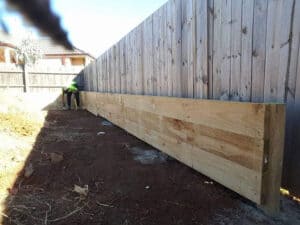Introduction
When it comes to enhancing the aesthetics and security of your property, fencing plays an important function. Nevertheless, it's not almost appearances or privacy; the choice of fencing product can have significant ecological implications. In Melbourne, property owners are progressively becoming conscious of how their choices affect the planet. This short article dives deep into "The Environmental Impact of Different Fencing Products in Melbourne," examining numerous options from a sustainability perspective.
Understanding Fencing in Melbourne
What is Fencing?
Fencing describes any barrier that confines a space, usually built from various materials such as wood, metal, vinyl, or even natural hedges. In Melbourne, the most popular types consist of lumber, colorbond steel, and composite materials.
Why is Product Choice Important?
The material you pick for fencing can identify its durability, cost-effectiveness, and ecological footprint. Each product features its benefits and disadvantages.
The Ecological Effect of Different Fencing Products in Melbourne
Choosing the right fencing product isn't just about looks; it also includes thinking about the ecological effects. Let's explore how different materials measure up against each other.

Timber Fencing
Pros and Cons of Timber
- Pros: Renewable resource if sourced sustainably. Natural appearance that mixes well with Australian landscapes. Provides insulation benefits. Cons: Susceptible to insects like termites. Requires routine upkeep (painting/staining). Deforestation concerns if not sourced responsibly.
Colorbond Steel Fencing
Durability Fulfills Sustainability
Colorbond steel is celebrated for its longevity and strength against severe climate condition. However what about its ecological impact?
- Benefits: Made from recyclable materials. Long lifespan decreases the need for replacement. Low upkeep compared to timber. Drawbacks: High energy usage throughout production. Limited insulation properties compared to timber.
Vinyl Fencing
An Alternative Choice
Vinyl fencing has actually gained popularity due to its low upkeep requirements. Nevertheless, what is its environmental footprint?
- Advantages: Resistant to rust and decay. Does not need painting or staining. Disadvantages: Made from PVC, which has environmental concerns throughout production. Difficult to recycle after its lifespan ends.
Composite Fencing
Combining the very best of Both Worlds
Composite fencing integrates recycled wood fibers with plastic resins. Is it a sustainable option?
- Pros: Made from recycled materials. Highly resilient and resistant to rot and insects. Cons: Higher initial cost compared to traditional materials. Not all composites are created equal; some may include hazardous chemicals.
Natural Alternatives in Melbourne
Hedge Fencing
A Living Barrier
For those looking for an environment-friendly alternative, hedge fencing offers a gorgeous service that's alive!
- Benefits:
- Provides habitat for regional wildlife. Absorbs CO2 while supplying privacy.
- Requires ongoing maintenance (trimming). Takes time to develop a solid barrier.
Bamboo Fencing
Sustainable & Stylish
Bamboo is frequently overlooked however can be an exceptional choice for environmentally mindful house owners in Melbourne.
- Advantages:
- Fast-growing eco-friendly resource. Naturally pest-resistant without chemical treatments.
- May not be as durable as wood options. Limited schedule depending on regional suppliers.
Evaluating Lifecycle Impacts
Production Phase
Each product has a various carbon footprint related to its production:
|Material|Carbon Footprint|Sustainability Rating|| -----------------|-------------------|----------------------|| Timber|Moderate|High (if sourced sustainably)|| Colorbond Steel|High|Moderate|| Vinyl|Really High|Low|| Composite|Moderate|Moderate|| Bamboo|Low|High|
Installation Phase
How much energy does each fencing product take in during installation?
Timber requires standard tools but can be labor-intensive based on design complexity. Colorbond steel typically needs specific tools but sets up quickly due to pre-made panels. Vinyl fences are lightweight but still require careful handling during installation. Composite products usually come ready-to-install however can be much heavier than other options. Bamboo requires mindful planting and spacing considerations for ideal growth.End-of-Life Considerations
What occurs when your fence reaches the end of https://postheaven.net/flaghybezk/producing-safe-play-areas-with-child-friendly-fences-in-melbourne its life process?
Timber can disintegrate naturally if neglected or be repurposed into mulch or chips. Colorbond steel is highly recyclable at metal facilities with very little loss in quality. Vinyl fences typically end up in landfills since recycling choices are limited due to PVC's composition. Composite materials might have blended recyclability based upon their specific components. Bamboo fences can compost back into soil if without treatment or handled properly.Legislative Elements Affecting Fencing Choices in Melbourne
Local Regulations
Understanding regional regulations can even more affect your choice of fencing products:
Many councils impose constraints on height and type based on aesthetic values or area character guidelines. Environmentally friendly propositions might use incentives for sustainable options through refunds or grants.FAQs
What is the most eco-friendly fencing material available in Melbourne?
Bamboo is thought about one of the most sustainable options due to its fast growth rate and low carbon footprint throughout production.
Is Colorbond fencing recyclable?
Yes! Colorbond steel is made from recyclable products and maintains top quality standards even after recycling processes.
How long does lumber fencing last?
With appropriate upkeep, wood fences can last in between 10 to twenty years; untreated wood may degrade quicker due to ecological elements like moisture and pests.
Does vinyl fencing have any environmental drawbacks?
Yes, vinyl is made from PVC which has significant environmental concerns during production and restricted recycling possibilities post-consumer use.
Are composite fences environmentally friendly?
They are generally more sustainable than conventional alternatives because they make use of recycled materials; however, they differ widely based on brand specs relating to chemicals used in producing processes.
What needs to I think about when choosing a fence type?
Evaluate aspects such as resilience, aesthetics, upkeep requirements, life-span expectations, regional environment conditions impacting longevity/quality deterioration gradually along with sustainability considerations!
Conclusion
In summary, "The Ecological Impact of Various Fencing Materials in Melbourne" produces vital insights into making notified decisions that benefit both your property and our world as an entire! Whether you select eco-friendly bamboo or robust Colorbond steel depends mostly on individual concerns-- balancing visual appeals with sustainability while sticking carefully within appropriate legislative structures assurances that your options support both individual needs together with wider neighborhood interests!
While it is essential to enjoy owning property visually developed spaces like gardens fenced off stylishly-- it's similarly important we consider prospective repercussions originating from these decisions leading towards enhanced ecological footprints-- due to the fact that every little bit counts!